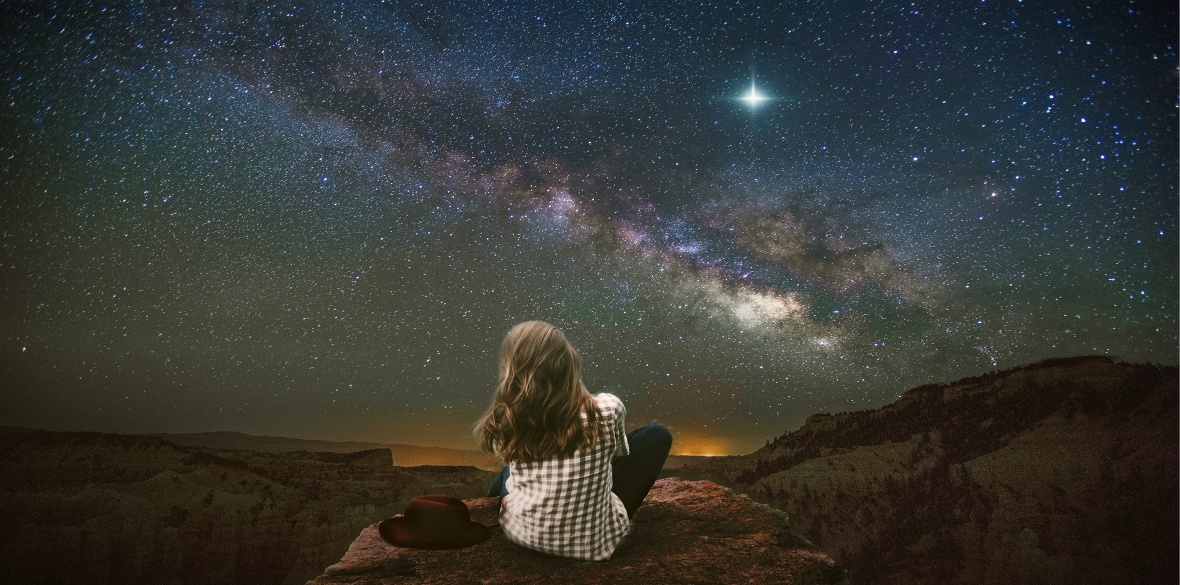This is the last article you can read this month
You can read more article this month
You can read more articles this month
Sorry your limit is up for this month
Reset on:
Please help support the Morning Star by subscribing here
TONIGHT is one of the best nights of the year for shooting stars, as we go through the huge annual meteor shower called the Perseids.
Shooting stars are what we see as small objects travelling through space collide with the Earth’s atmosphere. The speed of their movement through the air causes so much friction that they burn up in a fireball. These meteors, some of which are no bigger than a grain of sand and travel 15 times faster than a high-powered rifle bullet, often burn up 60 miles up in the sky, well before they reach the Earth’s surface. However, some larger meteors fall all the way to Earth, leaving a meteorite — the space rock itself.
There are so many tiny fragments of rock from space colliding with Earth and its atmosphere that every year they increase the Earth’s mass by 20,000 tons, (although this is infinitesimal compared to the weight of the Earth which is twenty million billion times heavier than this). This perpetual rain of small objects from space isn’t so scary, but on rare occasions in Earth’s history, some rather larger objects have arrived: the “Chicxulub impactor” object often blamed for the extinction of many dinosaurs 66 million years ago is thought to have had a mass of at least one trillion tons.
While the dinosaurs would have certainly noticed that impact, small meteorites are hard to find even once they’ve landed. Often, the locations of falling meteorites are predicted by looking at the trajectories of a group of shooting stars. By tracing the trails back, shooting stars spotted all over the sky can be found to have originated from one particular location, and even travel the same journey through the atmosphere too. While some burn up, others in the group may make it down to the ground. These groupings occur because the meteors are the remnants of crumbling space rock, all travelling the same trajectory through space.
If you’ve been paying close attention to the sky in the last month or so, you might have seen a comet called Neowise that was visible for a month or so from the northern hemisphere. Comets are much bigger chunks of space rock and ice. They orbit the sun and are visible when their orbits get close enough to the Sun and thus to Earth’s orbit (Neowise was 64 million miles away at its closest). The sun’s energy makes them constantly expel highly energised atoms (ions) and dusty debris in ‘tails’ that glow, both from being supercharged and also from reflecting back the sunlight that bounces off the trail of dust.
Comets and shooting stars are very different, as comets are generally visible for weeks or months, burning up in an entirely distinct way from the little fragments of rock that hit the roof of our sky. However, their origins are distinctly related. Many meteors are the fragments of rock ejected by a comet during its lifetime, often during its formation early on in the solar system’s history.
This is how we come to have the regularity of the August meteor shower, the Perseids. Each August the Earth’s orbit crosses the orbit of a comet called Swift-Tuttle. Swift-Tuttle is a 16-mile-wide lump of ice and rock that takes 133 years to orbit the Sun.
A trail of fragments stretches out along its whole orbit, so every August we get a meteor shower, even though the comet itself may be far away and invisible. Swift-Tuttle was last around in the region we see the Perseids, its closest point to Earth, in 1992. We can expect it again in 2125.
Swift-Tuttle is a “great comet’” — a comet so bright that in 1992 it could easily be seen without binoculars. Space telescopes survey the sky so comprehensively now it is unlikely that amateur observers will be the first to spot a comet as they might have in the past. The brightness of a comet depends on lots of factors, amateur observers from all over the world contribute to our understanding of their natures by reporting their findings.
The reports of amateur stargazers today are important since they can be compared with the historical record of comet sightings. We can look for historical accounts of comet sightings for comets that return every few hundreds or even thousands of years. Depictions of the great comets can be found littered through history, often recorded as momentous signs of catastrophe.
Aside from being signs, comets have the potential to cause catastrophe in their own right: Swift-Tuttle has a mass similar to the “Chicxulub impactor,” and would certainly cause mass extinction if it collided with the Earth. This was once a concern, but calculations since show we’re safe from that particular demise.
Comets are particularly exciting because unlike other objects in space they are full of frozen water. Water was present during the formation of the solar system, but as the early sun heated up much of it evaporated. Comets formed far enough away from the sun for the water not to evaporate. This distance is called the “frost line” and is thought to have been somewhere between Mars and Jupiter.
The frost line is further away from the sun than the Earth, which makes the existence of water on our planet unusual. In fact, it is now widely accepted that at least some of the water on Earth was originally brought by comets and asteroids that had formed beyond the frost line, although there is ongoing debate about the relative importance of different sources.
By measuring the radioactivity of water and comparing it to water from comets, one group of scientists have even hypothesised that most of Earth’s water might have arrived from comet impact.
Since liquid water is vital to life on Earth, its existence on extraterrestrial bodies is the focus of much attention. None of the other planets in the solar system are known to have stable bodies of liquid water. However, this Monday brand new results were announced that huge lakes of stable water appear to be held just under the surface of a dwarf planet in our solar system, Ceres. Ceres is a couple of times smaller than Pluto and exists between Mars and Jupiter at the frost line itself.
Comets and meteors have been interpreted as portents of doom throughout history, unexplained fiery nomads bringing warnings of danger. The image of the Earth as a safe haven under attack from threatening space objects is a powerful one. However, studying them teaches us more about how the Earth came to be, and shows us it owes a lot to the rest of the solar system. Although impacts from space have caused huge destruction, it’s also likely that they helped to create the conditions for life itself.











